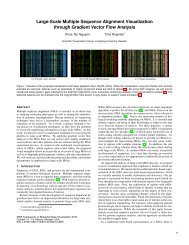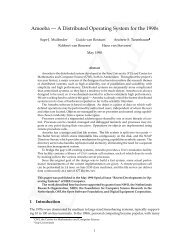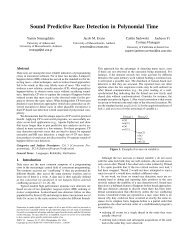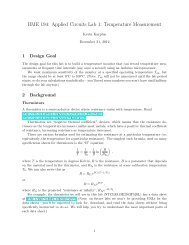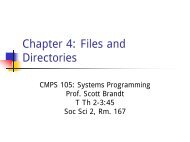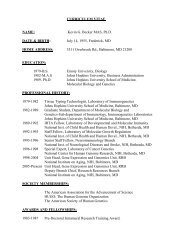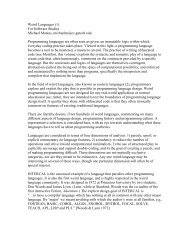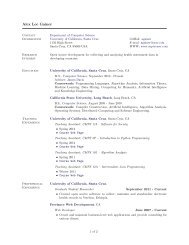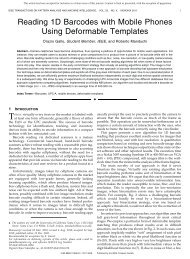A FAST AND ROBUST FRAMEWORK FOR IMAGE FUSION AND ...
A FAST AND ROBUST FRAMEWORK FOR IMAGE FUSION AND ...
A FAST AND ROBUST FRAMEWORK FOR IMAGE FUSION AND ...
Create successful ePaper yourself
Turn your PDF publications into a flip-book with our unique Google optimized e-Paper software.
minimization family as they are not convex functions).<br />
In the square 4 or under-determined cases, there is only one measurement available<br />
for each high-resolution pixel. As median and mean operators for one or two measurements<br />
give the same result, L1 and L2 norm minimizations will result in identical answers. Also in<br />
the under-determined cases certain pixel locations will have no estimate at all. For these cases,<br />
it is essential for the estimator to have an extra term, called the regularization term, to remove<br />
outliers. The next section discusses different regularization terms and introduces a robust and<br />
convenient regularization term.<br />
2.2.3 Robust Regularization<br />
As mentioned in Chapter 1, super-resolution is an ill-posed problem [17], [43]. For<br />
the under-determined cases (i.e. when fewer than r 2 non-redundant frames are available), there<br />
exist an infinite number of solutions which satisfy (2.2). The solution for square and over-<br />
determined 5 cases is not stable, which means small amounts of noise in the measurements<br />
will result in large perturbations in the final solution. Therefore, considering regularization in<br />
super-resolution as a means for picking a stable solution is indeed necessary. Also, regulariza-<br />
tion can help the algorithm to remove artifacts from the final answer and improve the rate of<br />
convergence. Of the many possible regularization terms, we desire one which results in high-<br />
resolution images with sharp edges and is easy to implement.<br />
A regularization term compensates the missing measurement information with some<br />
general prior information about the desirable high-resolution solution, and is usually imple-<br />
mented as a penalty factor in the generalized minimization cost function (5.5):<br />
�<br />
N�<br />
�<br />
�X = ArgMin ρ(Y (k),D(k)H(k)F (k)X)+λΥ(X) , (2.14)<br />
X<br />
k=1<br />
sources of outliers as Laplacian probability density function (PDF) rather than Gaussian PDF.<br />
4<br />
where the number of non-redundant low-resolution frames is equal to the square of resolution enhancement<br />
factor.<br />
5<br />
where the number of non-redundant low-resolution frames is larger than the square of resolution enhancement<br />
factor.<br />
23




